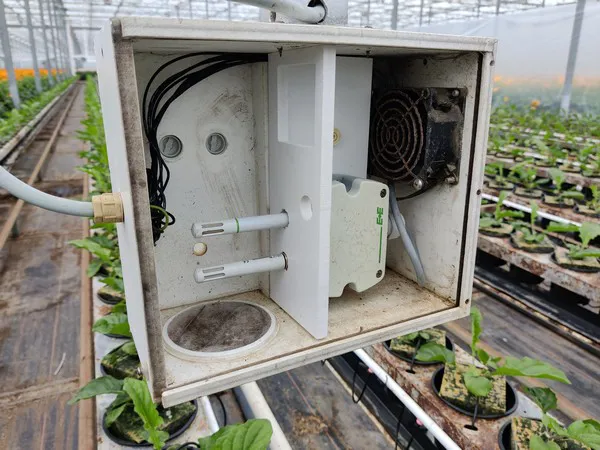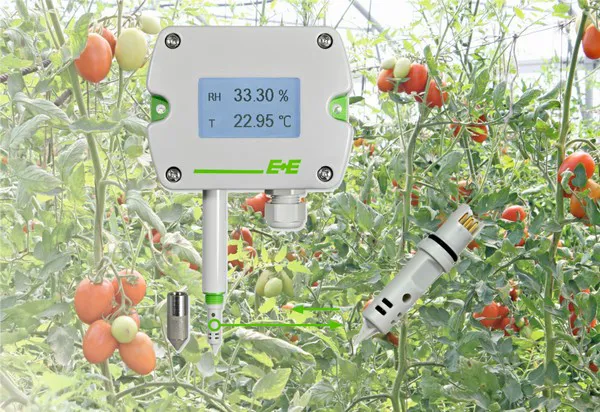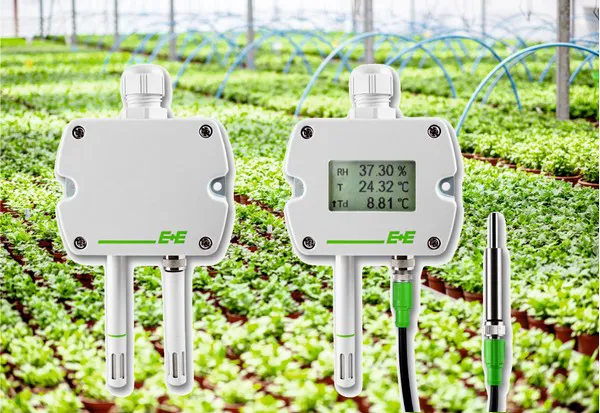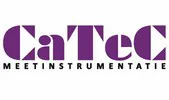“Our sensors are adapted to make things as efficient as possible for the grower. Our relative humidity and temperature sensors now have interchangeable calibrated sensors, which makes maintenance much easier and prevents the loss of data. In addition, we created heated humidity sensors as a solution to many growers’ struggles with condensation interfering with the measurements,” says Paul Hofstede, Sales Engineer and Product specialist at CaTeC, a supplier of measuring instruments for horticulture as well as other industries. In this article, Hofstede gives some examples of their devices being adapted to the needs of growers, as well as a new way they were able to use one of their tools that is often used in hospitals in the greenhouse for the first time, and with promising results. 
An efficient solution that also prevents data loss
One of CaTeC’s sensors that has been innovated according to the grower’s needs is the EE212, which measures relative humidity and temperature. Hofstede explains, “what is special about this sensor is that its head is exchangeable. Normally, these sensors can be challenging to maintain as they need to be calibrated once a year. The grower would then have to take out the complete sensor, send it back to us, after which we calibrate it and send it back to the grower. This is not only inconvenient, it also means that there is at least one entire day of data loss. By listening to the users of our sensors, we came up with a solution. With the EE212, the sensor head is exchangeable. This really simplifies the maintenance, as the grower can simply exchange the head for a newly calibrated one and you are done. No measurements are lost, which ultimately increases the data’s accuracy, and it is extremely simple.”
The EE212
The solution to condensation on humidity sensors
According to Hofstede, an issue that many growers run into when they want to measure high relative humidity, is condensation on the sensor. “A lot of growers struggle with getting the right measurements as a result of condensation, as the sensor does not work correctly anymore when it gets moist.” Normally the grower would have to wait for the sensor to dry before it gets back to correct measurements. “Yet we created a heated element for our EE211 series, which increases the temperature directly around the sensor, thus preventing condensation. It also calculates the temperature difference into the results automatically, so that the data remains accurate.”
The EE211
Optimizing soil steam sterilization
Hofstede also mentions a recent application of their barometric pressure transducers, using it to optimize soil steam sterilization. “These instruments measure air pressure and they are often used in hospitals. Yet we recently tested a new way to use it in a greenhouse, and the results have been very promising. Together with HB Techniek we used our instrument for a system that provides a controlled manner to penetrate the steam deeper into the ground while measuring the air pressure.” By doing this we are able to increase the quality of soil steam sterilization, which ultimately also means you are reducing energy. Soil steam sterilization is often done without any measurements, and this system provides the possibility to do it in a controlled manner and increase its efficiency.” Henk Boerma, founder of HB Techniek, adds that that this system is able to give more insight into the steaming process, which also enables them to modify the process per grower. Both Boerma and Hofstede see a lot of benefits for growers who use steam sterilization, and are hoping to apply this method in more greenhouses in the future.
For more information:
CaTeC
Paul Hofstede
Paul.Hofstede@catec.nl
www.catec.nl
